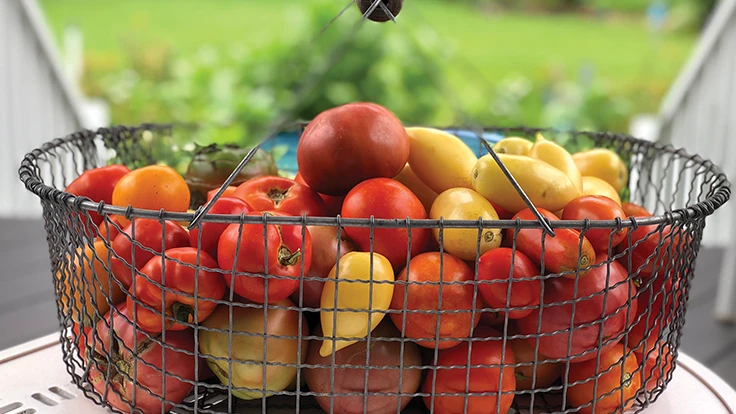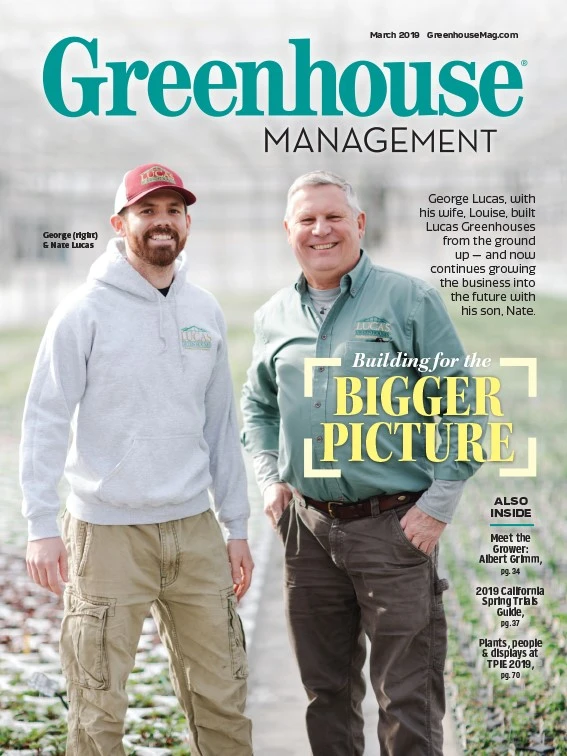

More consumers are growing their own produce — driven by an increasing awareness of where food comes from and how it’s produced. This renewed interest in local food production presents huge opportunities for edible growers who can keep up with the latest trends.
“There’s a supply chain issue because [garden center retailers] are still stocking the same, boring edibles they had 20 years ago,” says food gardening expert, author and PBS correspondent, Brie Arthur. “There have been a lot of genetic improvements in the last 20 years, so there’s no reason why Better Boy and Early Girl tomatoes should be the only options at a garden center. I wish growers would grow more interesting varieties.”
There’s no shortage of interesting edible varieties being introduced. Diane Blazek, executive director of the National Gardening Bureau and All-America Selections, measures the growth of the edible market by the number of vegetable entries submitted to the AAS trial program. “There’s no slowdown,” she says. “In fact, the AAS edible entries are increasing too fast, so we’re going to have to start limiting the number of entries.”
With so many edible options available, where should growers focus? Arthur and Blazek explain the edible trends they’re seeing, and offer some advice.
Offer something different.
Move over, Early Girl — consumers are looking for more uncommon, exciting edibles than run-of-the-mill garden classics.
“Why grow green bell peppers when they’re 79 cents a pound at the grocery store?” Blazek says. “Grow a unique pepper that can wow your guests. When it’s a little bit more unique, you’re probably going to get a better price for it. You can sell Mad Hatter [a 2017 AAS Winner] for $4.99, and the seed [costs] aren’t going to be all that different, so your inputs are about the same [as more common peppers]. Why not take advantage of that?”
Color is an instant differentiator in edibles, Blazek says, whether it’s an orange cauliflower or Purple Haze carrots (a 2006 AAS Winner). Over the past six years, six different colors of Chef’s Choice tomatoes have been selected as AAS Winners — offering a full spectrum of red, pink, orange, yellow, green and black varieties.
Another edible trend drawing consumers’ attention is produce that comes in funky shapes — whether intentionally, like the hat-shaped Mad Hatter peppers Blazek mentioned, or unintentionally, like the “imperfect produce” that’s too misshapen or ugly for traditional retail sales. Veggies with “some quirky character” become “Instagram-worthy food,” Blazek says. “If it’s cool and unique, you know it’s going to end up on Instagram.” This gives growers and retailers opportunities to engage with consumers online.

Grow practical plants.
When evaluating new varieties to grow, don’t get too hung up on how cool edibles look on Instagram. Arthur urges growers to look beyond novel appearance and focus instead on edibles that are easy for consumers to grow.
Arthur, who is also the vice president of horticulture for Gardenuity, looks for new varieties with improved disease resistance and higher yields — “like everbearing strawberries or basil that has downy mildew resistance,” she says. “These things are practical for the end consumer because they address some of the [growing challenges], while giving the consumer a vegetable or fruit that actually tastes good, that makes them want to grow it.”
Blazek also sees smaller, more compact edibles coming to market — making gardening more convenient for smaller spaces.
“Baby boomers are still the primary segment of gardening,” she says, “and a lot of us are empty nesters so we don’t need an icebox-size watermelon. We need more like a football-sized watermelon, and we’ve definitely seen that [smaller trend] with melons, squash, even miniature peppers.”
Similarly, Blazek says, AAS gets far more cherry and grape tomato entries than beefsteaks. One of the 2019 AAS Winners is Fire Fly, a small yellow cherry tomato that’s novel enough to stand out on a cheese tray, but practical enough for a kid’s lunchbox — blending all the traits that consumers crave.

Tell a story.
Consumers who grow their own produce want to know where food comes from, so it’s important for growers to share the story behind each plant.
“Wholesale growers have a massive opportunity to connect with who they’re selling to and encourage retailers to market the faces behind those plants,” Arthur says. “Those wholesalers could tell the story of how those plants were grown and who cared for them. That connects the end customer to the full circle of a plant’s life.”
With mass market produce recalls common these days, transparency and food safety are increasingly important to consumers, Blazek says. Educating them about your growing process is more important than ever, whether you sell direct to consumers or through retailers.
“You’re able to pull people in so they understand where their food comes from, what it takes to produce their plants,” Blazek says. “Growers have to stand out to be successful, so to set yourself apart, you have to sell the story.”

Explore the March 2019 Issue
Check out more from this issue and find your next story to read.
Latest from Greenhouse Management
- Anthura acquires Bromelia assets from Corn. Bak in Netherlands
- Top 10 stories for National Poinsettia Day
- Langendoen Mechanical hosts open house to showcase new greenhouse build
- Conor Foy joins EHR's national sales team
- Pantone announces its 2026 Color of the Year
- Syngenta granted federal registration for Trefinti nematicide/fungicide in ornamental market
- A legacy of influence
- HILA 2025 video highlights: John Gaydos of Proven Winners





